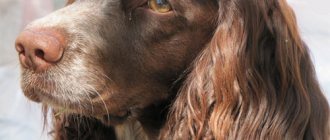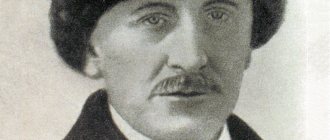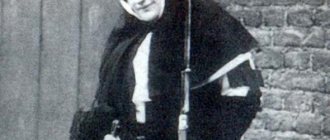LiveInternetLiveInternet
Music for happiness - gentle guitar
The first chord is light, a breath of wind, your fingers barely touch the strings.
A vanishingly quiet sound, E minor, there is nothing simpler... The first snowflake is light, translucent, carried by an almost imperceptible wind. She is the harbinger of snowfall, a scout, the first to descend to the ground... The second chord - the fingers of the left hand are deftly rearranged, the right hand confidently and softly leads along the strings. Down, down, up - simple and gives the simplest sound. It's not a blizzard or a storm - just snowfall. There can be nothing complicated about it. Snowflakes begin to fly more often - the vanguard of the main forces, sparkling ice stars. Then the chords replace each other more viscously and tenderly, so that the ear almost does not notice the transition from one sound to another. A transition that always sounds harsh. Instead of a fight, it’s too much. Eight. The intro is played and even if it’s not an instrumental that sounds triumphant and joyful during a summer downpour or viscous and bewitching in a snowstorm, even if it’s just chords put together, the music surprisingly suits the snow outside the window, the white butterflies of winter, the icy tiny stars that are all dancing, dancing their dance in the night sky... Singing is woven into the music - quiet, the words are indistinguishable, elude perception, mixed with the snowfall and the measured, natural beating of the heart. A clear rhythm and calm strength resound in them. The song has no end, it just softly intertwines with the dance of snowflakes and goes away unnoticed, leaving the sky and snow alone... Cold and darkness conceal sounds and movements, reconciling the city with winter... And the Lord of Snowfall, who played his part on one of the roofs, gently removes the cover your guitar, which has power over the elements. There is snow on his shoulders and hair, red cheerful sparks flash and go out - snowflakes reflect the light of distant lights. There is light in the windows of the house opposite. There are people there who don’t know how to weave the lace of the elements... The staircase is an ordinary staircase of a nine-story building. Doors, an elevator always occupied by someone, the dim light of a light bulb on the landing... The Lord of Snowfall walks, holding his guitar, quietly and slowly walking up the steps. From the ninth floor to the first, carefully, so as not to disturb the warm feeling of relaxed, trusting happiness that comes every time after a completed game... And the usual angry question from the mother who opened the door: - When will you stop playing your games and finally start thinking? It hits the open soul like a knife. The soft snow wings given by the fulfillment of the present break and only misunderstanding and resentment remain. Why does she hit where it hurts the most? For what?.. ...At night, a wild wind mixed with snow blew through the city. He broke tree branches, tore wires, swept up roads... It was the Lord of Snowfall's guitar that sang again. Ulyana Belaya Vorona
Stories about nature for schoolchildren
Interesting stories about forest animals, stories about birds, stories about the seasons. Fascinating forest stories for middle school children.
Mikhail Prishvin
FOREST DOCTOR
We wandered in the forest in the spring and observed the life of hollow birds: woodpeckers, owls. Suddenly, in the direction where we had previously identified an interesting tree, we heard the sound of a saw. It was, as we were told, the collection of firewood from dead wood for a glass factory. We were afraid for our tree, hurried to the sound of the saw, but it was too late: our aspen lay, and there were many empty fir cones around its stump. The woodpecker peeled all this off over the long winter, collected it, carried it to this aspen tree, laid it between two branches of his workshop and hammered it. Near the stump, on our cut aspen, two boys were doing nothing but cutting down the wood.
- Oh, you pranksters! - we said and pointed them to the cut aspen. “You were told to remove dead trees, but what did you do?”
“The woodpecker made a hole,” the guys answered. “We took a look and, of course, we cut it down.” It will still be lost.
Everyone began to examine the tree together. It was completely fresh, and only in a small space, no more than a meter in length, did a worm pass inside the trunk. The woodpecker obviously listened to the aspen like a doctor: he tapped it with his beak, realized the emptiness left by the worm, and began the operation of extracting the worm. And the second time, and the third, and the fourth... The thin trunk of the aspen looked like a pipe with valves. The “surgeon” made seven holes and only on the eighth he caught the worm, pulled out and saved the aspen.
We cut this piece out as a wonderful exhibit for a museum.
“You see,” we told the guys, “the woodpecker is a forest doctor, he saved the aspen, and it would live and live, and you cut it down.”
The boys were amazed.
Mikhail Prishvin.
SQUIRREL MEMORY
Today, looking at the tracks of animals and birds in the snow, this is what I read from these tracks: a squirrel made its way through the snow into the moss, took out two nuts hidden there since the fall, ate them right away - I found the shells. Then she ran ten meters away, dived again, again left a shell on the snow and after a few meters made a third climb.
What kind of miracle? It’s impossible to think that she could smell the nut through a thick layer of snow and ice. This means that since the fall I remembered about my nuts and the exact distance between them.
But the most amazing thing is that she could not measure centimeters like we did, but directly by eye she determined with precision, dived and reached. Well, how could one not envy the squirrel’s memory and ingenuity!
Georgy Skrebitsky
FOREST VOICE
Sunny day at the very beginning of summer. I am wandering not far from home, in a birch forest. Everything around seems to be bathing, splashing in golden waves of warmth and light. Birch branches flow above me. The leaves on them seem either emerald green or completely golden. And below, under the birches, light bluish shadows also run and flow across the grass, like waves. And the light bunnies, like reflections of the sun in the water, run one after another along the grass, along the path.
The sun is both in the sky and on the ground... And this makes it feel so good, so fun that you want to run away somewhere into the distance, to where the trunks of young birch trees sparkle with their dazzling whiteness.
And suddenly from this sunny distance I heard a familiar forest voice: “Kuk-ku, kuk-ku!”
Cuckoo! I've heard it many times before, but I've never even seen it in a picture. What is she like? For some reason she seemed plump and big-headed to me, like an owl. But maybe she's not like that at all? I'll run and have a look.
Alas, it turned out to be far from easy. I listen to her voice. And she will fall silent, and then again: “Kuk-ku, kuk-ku,” but in a completely different place.
How can you see her? I stopped in thought. Or maybe she's playing hide and seek with me? She's hiding, and I'm looking. Let's play it the other way around: now I'll hide, and you look.
I climbed into the hazel bush and also cuckooed once and twice. The cuckoo has fallen silent, maybe it’s looking for me? I sit in silence, even my heart is pounding with excitement. And suddenly, somewhere nearby: “Kuk-ku, kuk-ku!”
I am silent: better look, don’t shout to the whole forest.
And she’s already very close: “Kuk-ku, kuk-ku!”
I look: some kind of bird is flying across the clearing, its tail is long, it is gray, only its chest is covered in dark speckles. Probably a hawk. This one in our yard hunts sparrows. He flew up to a nearby tree, sat down on a branch, bent down and shouted: “Kuk-ku, kuk-ku!”
Cuckoo! That's it! This means that she does not look like an owl, but like a hawk.
I'll crow out of the bush in response to her! Out of fright, she almost fell out of the tree, immediately darted down from the branch, scurried off somewhere into the thicket of the forest, and that was all I saw.
But I don’t need to see her anymore. So I solved the forest riddle, and besides, for the first time I spoke to the bird in its native language.
So the clear forest voice of the cuckoo revealed to me the first secret of the forest. And since then, for half a century, I have been wandering in winter and summer along remote untrodden paths and discovering more and more secrets. And there is no end to these winding paths, and there is no end to the secrets of our native nature.
Konstantin Ushinsky
FOUR WISHES
Vitya sledded down an icy mountain and skated on a frozen river, ran home rosy, cheerful and said to his father:
- How fun it is in winter! I wish it were all winter!
“Write your wish in my pocket book,” said the father.
Mitya wrote it down.
Spring came. Mitya ran to his heart’s content in the green meadow for colorful butterflies, picked flowers, ran to his father and said:
- What a beauty this spring is! I wish it were still spring.
The father again took out the book and ordered Mitya to write down his wish.
Summer has come. Mitya and his father went to haymaking. The boy had fun all long day: he fished, picked berries, tumbled in the fragrant hay, and in the evening he said to his father:
- I had a lot of fun today! I wish there was no end to summer!
And this desire of Mitya was written down in the same book.
Autumn has come. Fruits were collected in the garden - ruddy apples and yellow pears. Mitya was delighted and said to his father:
— Autumn is the best time of the year!
Then the father took out his notebook and showed the boy that he had said the same thing about spring, and winter, and summer.
Vera Chaplina
WINGED ALARM CLOCK
Seryozha is happy. He moved to a new house with his mom and dad. Now they have a two-room apartment. One room with a balcony, my parents lived in it, and Seryozha lived in the other.
Seryozha was upset that the room where he would live did not have a balcony.
“Nothing,” said dad. - But we will make a bird feeder, and you will feed them in winter.
“So only sparrows will fly,” Seryozha objected dissatisfied. - The guys say they are harmful, and they shoot them with slingshots.
- Don’t repeat nonsense! - the father got angry. — Sparrows are useful in the city. They feed their chicks with caterpillars, and hatch chicks two or three times during the summer. So consider how much benefit they have. Anyone who shoots birds with slingshots will never be a real hunter.
Seryozha remained silent. He didn't want to say that he, too, had shot birds with a slingshot. And he really wanted to be a hunter, and definitely like his dad. Just shoot accurately and learn everything from the tracks.
Dad kept his promise, and on the first day off they got to work. Seryozha provided nails and planks, and dad planed and hammered them together.
When the work was finished, dad took the feeder and nailed it right under the window. He did this on purpose so that in winter he could pour food through the window for the birds. Mom praised their work, but there’s nothing to say about Seryozha: now he himself liked his father’s idea.
- Dad, will we start feeding the birds soon? - he asked when everything was ready. - After all, winter has not yet come.
- Why wait for winter? - Dad answered. - Now let's begin. You think that when you pour out the food, all the sparrows will flock to peck it! No, brother, you need to train them first. Even though a sparrow lives near a person, it is a cautious bird.
And it’s true, as dad said, so it happened. Every morning Seryozha poured various crumbs and grains into the feeders, but the sparrows did not even fly close to her. They sat down at a distance, on a large poplar tree, and sat on it.
Seryozha was very upset. He really thought that as soon as the food was poured out, the sparrows would immediately fly to the window.
“Nothing,” dad consoled him. “They’ll see that no one is offending them, and they’ll stop being afraid.” Just don't hang around the window.
Seryozha followed all his father’s advice exactly. And soon I began to notice that every day the birds became bolder and bolder. Now they were already landing on the nearby branches of the poplar, then they became completely brave and began to fly to the table.
And how carefully they did it! They will fly by once or twice, see that there is no danger, grab a piece of bread and quickly fly off with it to a secluded place. They peck there slowly so that no one can take it away, and then fly back to the feeder.
While it was autumn, Seryozha fed the sparrows with bread, but when winter came, he began to give them more grain. Because the bread froze quickly, the sparrows did not have time to peck it and remained hungry.
Seryozha felt very sorry for the sparrows, especially when severe frosts began. The poor creatures sat disheveled, motionless, with their frozen paws tucked under them, and patiently awaited a treat.
But how happy they were about Seryozha! As soon as he approached the window, they, chirping loudly, flew in from all directions and hurried to have breakfast as soon as possible. On frosty days, Seryozha fed his feathered friends several times. After all, a well-fed bird can tolerate cold more easily.
At first, only sparrows flew to Seryozha’s feeding trough, but one day he noticed a titmouse among them. Apparently, the winter cold also drove her here. And when the titmouse saw that there was money to be made here, it began to fly every day.
Seryozha was glad that the new guest visited his dining room so willingly. He read somewhere that tits love lard. He took out a piece, and so that the sparrows would not drag it away, he hung it on a thread, as dad taught.
The titmouse instantly realized that this treat was reserved for her. She immediately grabbed onto the fat with her paws, pecked, and she seemed to be swinging on a swing. She pecked for a long time. It’s immediately obvious that she liked this delicacy.
Seryozha always fed his birds in the morning and always at the same time. As soon as the alarm clock rang, he got up and poured food into the feeder.
The sparrows were already waiting for this time, but the titmouse was especially waiting. She appeared from nowhere and boldly landed on the table. In addition, the bird turned out to be very savvy. She was the first to figure out that if Seryozha’s window knocked in the morning, she had to hurry to breakfast. Moreover, she was never mistaken and, if the neighbor’s window knocked, she did not fly in.
But this was not the only thing that distinguished the shrewd bird. One day it happened that the alarm clock went bad. No one knew that he had deteriorated. Even my mother didn't know. She could have overslept and been late for work if not for the tit.
The bird flew in to have breakfast and saw that no one was opening the window, no one was pouring food out. She jumped with the sparrows on the empty table, jumped and began knocking on the glass with her beak: “Let’s eat quickly!” Yes, she knocked so hard that Seryozha woke up. I woke up and couldn’t understand why the titmouse was knocking on the window. Then I thought - she was probably hungry and asking for food.
Got up. He poured food for the birds, looked, and on the wall clock the hands already showed almost nine. Then Seryozha woke up mom and dad and quickly ran to school.
From then on, the titmouse got into the habit of knocking on his window every morning. And she knocked at exactly eight o'clock. It’s like she guessed the time by the clock!
It used to be that as soon as she knocked with her beak, Seryozha would quickly jump out of bed and rush to get dressed. Of course, it will keep knocking until you give it food. Mom laughed too:
- Look, the alarm clock has arrived!
And dad said:
- Well done, son! You won't find such an alarm clock in any store. It turns out that you didn’t work for nothing.
All winter the titmouse woke up Seryozha, and when spring came, she flew into the forest. After all, there, in the forest, tits build nests and hatch chicks. Probably, Serezhina’s titmouse also flew off to hatch her chicks. And by the fall, when they are adults, she will return to Seryozha’s feeding trough again, and, perhaps, not alone, but with the whole family, and will again begin to wake him up in the morning for school.
We recommend watching:
Stories by Nikolai Sladkov for schoolchildren
Stories about birds for children. Sparrow science
Stories about spring for schoolchildren
First day at the gymnasium
Stories about animals for schoolchildren
Natural phenomena
Natural phenomena
Natural phenomena often have a natural origin. These include sunrise and sunset. They also include the phenomena described below.
Biological phenomena
- Height . Through growth, living organisms can change. Changes concern not only external development, but also internal development.
- Metabolism . Because of metabolism, all living organisms can exist. It allows you to process nutrients through chemical transformations at the cellular level. Food turns into energy, energy is distributed throughout the body, and it develops.
- Depopulation . The number of living things may decline. This is called depopulation.
- At the end of life, all living organisms die. After which the processes of decomposition of organic substances into elementary material forms occur.
Interesting fact : lightning strikes the ground more than 100 times every second. Thus, more than 8.6 million discharges occur every day. They are so strong that one discharge is enough to toast several million pieces of toast at the same time.
Chemical phenomena
Various chemical processes constantly occur on Earth. These include crystal growth, which is considered the main stage of crystallization. Oxidation processes also occur in nature, during which fire or corrosion can occur.
Interesting: Solar wind: what is it, history of study, types, photos, videos
Geological phenomena
There are a lot of similar phenomena: erosion, the activity of volcanoes, geysers, various movements of tectonic plates and sedimentation.
Meteorological phenomena
Storms are among the most intense meteorological phenomena. Changes in weather, seasons, and circulation of substances in the atmosphere occur regularly. There are also atmospheric optical phenomena such as aurora, pillars of light, rainbows, and so on. Oceanographic phenomena include surf, storm, and tsunami.
Physical phenomena
Gravity can be considered a natural phenomenon that is always present on the planet. Thanks to it, all objects on the planet are attracted to its surface. Also, thanks to gravity, our planet is attracted to the Sun.
Essay “Winter landscape” 7th grade
Plan 1. Family traditions 2. Winter in the forest 3. Wonderful transformation “Winter. The peasant is triumphant..." - for some reason these are the lines that come to mind when you think about this time of year. Since early childhood I have loved winter very much. All this is connected with our frequent family trips out of town on weekends. There are no special places in the city where you can have fun in winter. But sometimes I also enjoy going to the stadium, which gives me the opportunity to skate. Outside the city, everything is different... Tall spruce trees form a green arch from their shaggy paws, which stretches over the entire road to the recreation center. All around there lie untouched snow-white snowdrifts, they sparkle in the rays of the morning sun, and become whimsically pinkish, like the tails of flamingos, when they are touched by the glare of the sunset. The forest smells something special. The air feels like it's cutting into your nostrils as you slowly let it in. There is no taste of car exhaust, stove smoke or other city odors. The silence literally deafens you from the first seconds. A slight rustling can be heard, the snow is barely audible falling on the branches of the trees. Gently, unnoticeably, like his mother, he wraps every twig, twig, and blade of grass with a duvet in order to preserve the vitality in them until the arrival of the long-awaited spring. Cutting through the cover of the light morning crust that had managed to form on the ski track, the whistling of the skis is so clearly audible. Or is winter whistling, rejoicing that we are trying all the fun it has invented. At the very end of the ski road, having accidentally touched a small bush, you yourself are transformed, showered with snow, like a regular resident of this fairy-tale snow-white kingdom.
What is nature made of?
Nature includes not only living objects and objects not created by human hands. First of all, nature is the entire planet Earth. This is a small corner of the universe where life originated. The Earth appeared more than 4.5 billion years ago, during which it changed, turning from clouds of gas and dust into a full-fledged planet, where life could subsequently arise from nothing.
What is nature made of?
Thanks to biological and geological processes, nature appeared in the form in which it can be observed now. Without weather and climatic conditions, the existence of organisms is impossible. The climate may vary depending on the area. Nature also includes inanimate objects such as water and air. Without these components, not a single organism on the planet can live.
Water on Earth takes different forms; it can exist in three states of aggregation. Water fills lakes and is found in large quantities in the atmosphere in a gaseous state. In addition, nature can include various soils and living organisms, the space near land. Thus, nature is everything that is on the planet for the comfortable existence of its inhabitants.
Interesting: Rain: why it comes, reasons, how it is measured, photos and videos
Components of nature
The components of nature are those departments of nature that are able to interact with each other, creating the necessary conditions for the existence of living organisms. Each component of nature has come a long way of development. Collectively, all natural components in a certain place can be called natural-territorial complexes.
Components of nature
Natural-territorial complexes exist all over the planet. The geographic envelope alone is already considered a separate natural-territorial component. The components of the outer shell of the earth are considered to be:
The upper part of the earth's crust is the hard shell of the Earth, mainly covered with the hydrosphere. The remaining parts of the lithosphere are affected by the atmosphere. Also, the troposphere and stratosphere are considered part of nature.
The entire hydrosphere . The water shell occupies more than 70% of the entire planet's territory. Without water, life on Earth is impossible. All water represents the world's water reserves. The biosphere is the totality of ecosystems of the entire planet. It is a global ecological system.
The anthroposphere is an area of the Earth that is being changed by humanity. This is where people live.
People inflict the greatest damage to nature themselves. It is extremely difficult to use technological progress without harming the environment.
Relief
Relief
The planet was formed under the influence of many factors, so the relief also changed over time. Relief represents all the irregularities of the Earth at the bottom of the oceans and surface. Each irregularity has its own size, appearance and history of origin.
Such a concept as “relief” in science applies only to the highest and lowest points of the planet in these areas. Mountain formations, ridges - all of these are considered the highest points. Valleys and lowlands are considered the lowest. Due to the relief, each area can be characterized as flat, hilly, mountainous.
Climate
Climate
Statistics on weather conditions represent climate. They are collected over a period of 30 years. Climate measurements are made taking into account all the rules for temperature measurements, as well as humidity, atmospheric pressure, the amount and intensity of winds, the presence of precipitation, as well as other weather changes over many decades.
Interesting: Why are plants planted in spring? Description, photo and video
Do not confuse climate and weather. Weather shows meteorological variables at a given time, while climate is formed over the years. To generate data on climatic conditions, you have to use special equipment. The climate system in a particular area shapes the climate. It consists of: air, water and other media.
Average monthly surface temperatures from 1961 to 1990. Example of climate change depending on location and time of year
The climate in certain areas often depends on the surface topography, latitude and altitude. Nearby bodies of water also influence climate change. According to V.P. Keppen, it is customary to classify climate changes and characteristics. Its system is based on temperature conditions, as well as the amount and type of precipitation.
The soil
Soil
This is a special mixture of minerals, organic matter, gases, etc. Thanks to the soil, the natural balance on the planet is maintained. Soil has important functions such as storing and providing moisture when needed, helping plants develop, improving the planet's atmosphere, and providing a home for soil organisms.
Each function performed directly affects the condition of the soil. Thanks to it, climate, relief, the presence of living beings, and the main minerals in its composition are formed. Soil scientists recognize soil as a separate ecological system.






